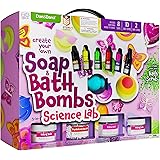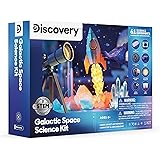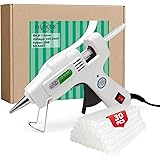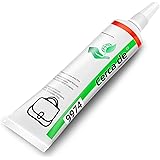Crafting a Greener Future: Your Guide to Amazing DIY Recycle Crafts
Are you eager to transform everyday waste into something beautiful and functional through DIY recycle crafts? The video above, showcasing 12 amazing recycle DIY crafts from 2017, serves as a fantastic reminder of the creative potential lurking in our recycling bins. It is often believed that waste materials hold little value; however, with a bit of imagination, these items can be given a vibrant second life.
The practice of upcycling, where discarded objects are repurposed into new products of higher value, is not merely a hobby. It is increasingly recognized as a powerful statement against disposability, transforming what might be seen as rubbish into remarkable creations. This approach not only stimulates creativity but also contributes significantly to environmental well-being.
Why Embrace Upcycling? The Benefits Unveiled
First, the environmental advantages of engaging in upcycling projects are substantial. Waste is notably reduced, meaning fewer items are sent to landfills, which helps to mitigate pollution and conserve precious natural resources. This process is often compared to turning dross into gold, highlighting the inherent value waiting to be discovered.
Secondly, financial savings can be realized when old materials are used instead of purchasing new ones for crafts or decor. Budget-conscious individuals find this aspect particularly appealing, as beautiful pieces can be created without significant expenditure. Furthermore, the satisfaction derived from crafting something unique from scratch is an invaluable benefit.
Thirdly, personal flair and creativity are wonderfully expressed through eco-friendly crafts. Each upcycled item tells its own story, infused with the creator’s vision and effort. It is an artistic endeavor, much like a painter finding a masterpiece within a blank canvas, but here the canvas is a discarded bottle or cardboard box.
Everyday Items, Extraordinary Potential: What Can Be Repurposed?
Next, let’s consider the vast array of materials readily available for your DIY recycle crafts toolkit. Many common household items are often discarded without a second thought, yet they possess immense potential for transformation. These materials are like hidden treasures, simply awaiting their moment to shine.
Plastic bottles, for instance, are frequently found and can be reimagined into planters, bird feeders, or decorative elements. Glass jars, often destined for the recycling bin, are ideal candidates for charming candle holders, storage containers, or unique vases. Their clear forms are perfect for showcasing intricate designs or colourful contents.
Cardboard, whether from delivery boxes or cereal packets, is a highly versatile material that can be shaped into picture frames, small furniture pieces, or intricate sculptures. Old clothing and fabric scraps are also incredibly useful, capable of being sewn into tote bags, patchwork quilts, or even braided rugs. Even humble tin cans find new purpose as pen holders or herb planters, proving that almost anything can be given a fresh start.
Discovering a Dozen Ways to Decorate and Design
Following this, a wide spectrum of upcycling craft ideas can be explored, mirroring the diversity implied by the video’s “12 Amazing Recycle DIY Crafts.” These projects range from simple to elaborate, ensuring there is something for every skill level. Each category offers a unique avenue for creative expression.
-
Home Decor Delights: Old glass bottles are transformed into elegant vases with a coat of paint, or stunning lanterns when wrapped with string lights. Cardboard can be fashioned into unique wall art or decorative shelves, adding character to any living space.
-
Practical Organizers: Tin cans are easily converted into colorful pen holders or brush organizers, helping to declutter desks and craft spaces. Cereal boxes can become charming storage boxes for small items, often adorned with decorative paper.
-
Fashion & Accessories: Denim from old jeans can be given a new life as stylish tote bags or sturdy placemats. Even bottle caps, often overlooked, are sometimes used to create quirky jewelry or mosaic art pieces.
-
Kids’ Creative Projects: Toilet paper rolls are frequently used to craft imaginative animals or miniature castles, fostering creativity in young minds. Socks with missing partners can be transformed into delightful puppets, encouraging storytelling and play.
-
Garden & Outdoor Enhancements: Large plastic bottles are ingeniously used as self-watering planters, supporting small herbs or seedlings. Old tires, often a disposal challenge, are sometimes painted and repurposed as vibrant garden planters or even outdoor seating.
Each of these examples represents a small fraction of the possibilities when common items are viewed through a creative lens. Old jeans can be transformed; simple toys can be created; gardens can be adorned. It is all about seeing the potential within what might otherwise be discarded.
Mastering the Art of Sustainable Crafting: Key Considerations
Furthermore, to ensure your sustainable crafting projects are successful, a few key considerations are important. These tips are designed to make your upcycling journey enjoyable and productive, preventing common pitfalls and maximizing your creative output.
-
Cleanliness is Paramount: Materials should always be thoroughly cleaned and dried before use. This prevents odors, ensures better adhesion for glues and paints, and creates a hygienic working surface. A clean canvas always allows for a better masterpiece.
-
Safety First: Tools such as craft knives and glue guns are commonly used, and safety precautions are always advised. Using appropriate protective gear and supervising children are essential steps to prevent accidents, just as a builder ensures safety on a construction site.
-
Start Simple, Build Up: For beginners, it is often recommended that simpler projects be tackled first. This allows for skill development and confidence-building before more complex creations are attempted. Much like learning an instrument, mastery comes with practice.
-
Seek Inspiration: The video above provides a wonderful starting point, but a wealth of ideas can be found online and in craft books. Inspiration is a powerful catalyst, igniting the spark of creativity and guiding your design choices.
-
Embrace Imperfection: It is understood that handmade items often possess unique characteristics and slight imperfections. These are not flaws but rather markers of authenticity and charm, distinguishing them from mass-produced goods.
Beyond 2017: Continuing the Upcycling Journey
The spirit of creativity and resourcefulness, celebrated in the “Best of 2017” video and extending into “another wonderful year of 2018” and beyond, continues to thrive. The practice of DIY recycle crafts is more relevant than ever, offering endless possibilities for personal expression while making a positive impact on the environment. It is hoped that this guide, combined with the visual inspiration from the video, encourages many more individuals to embark on their own upcycling adventures.







